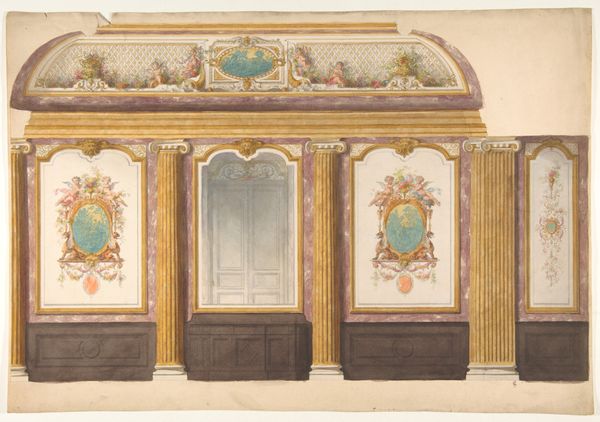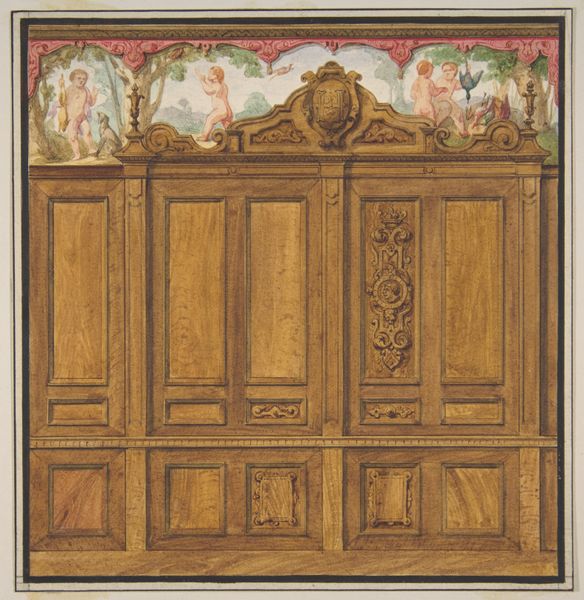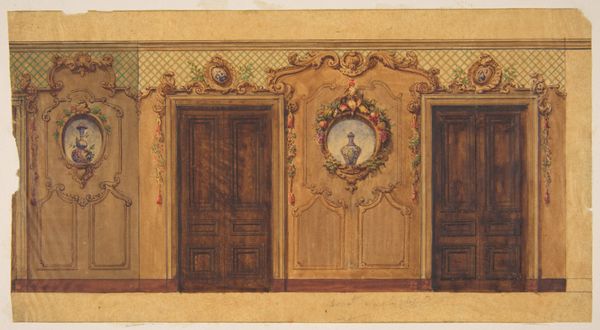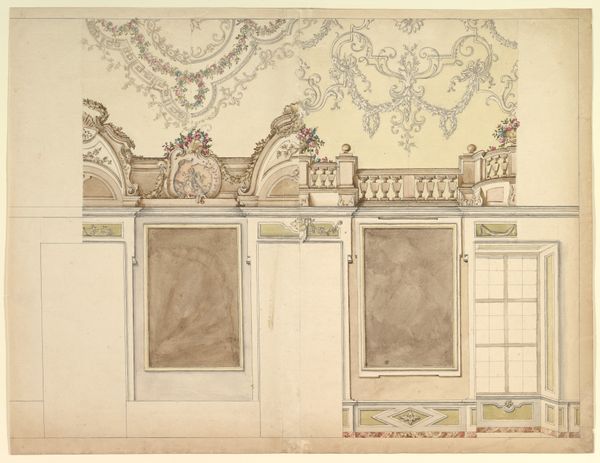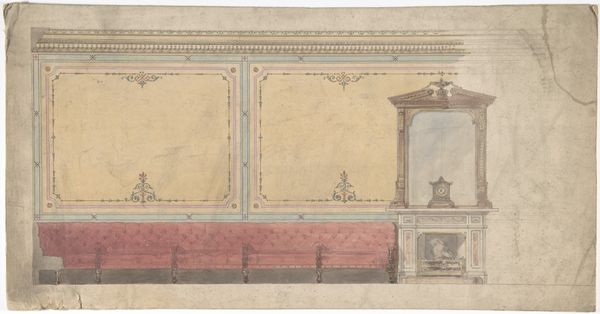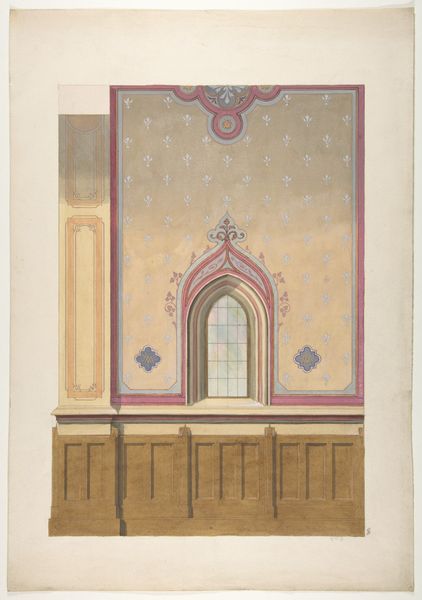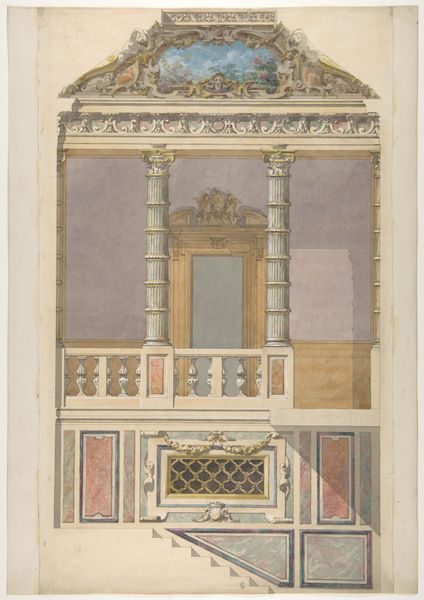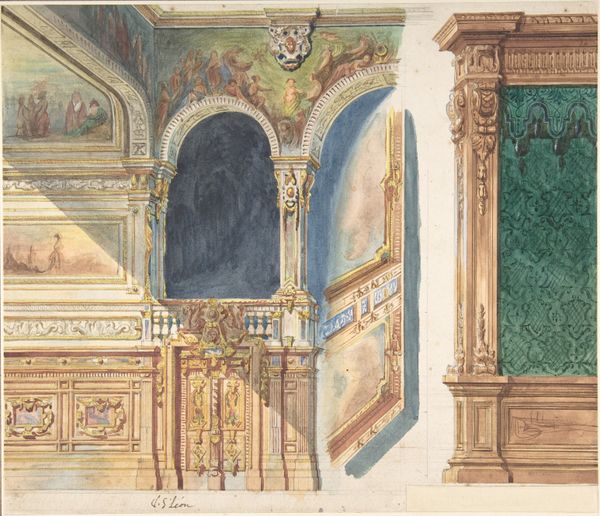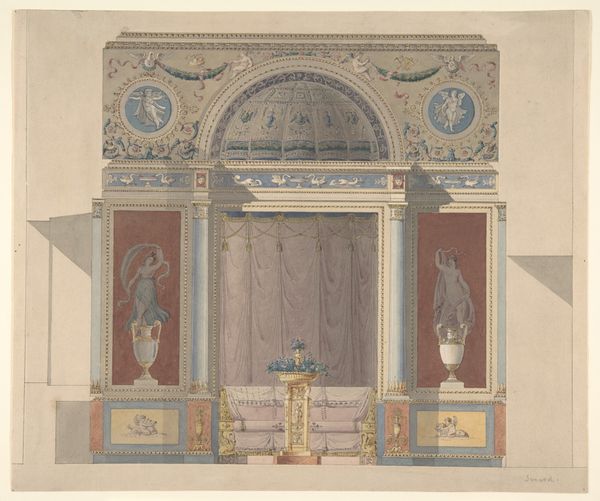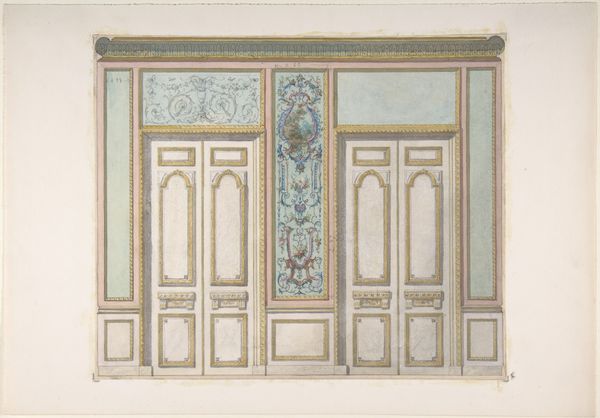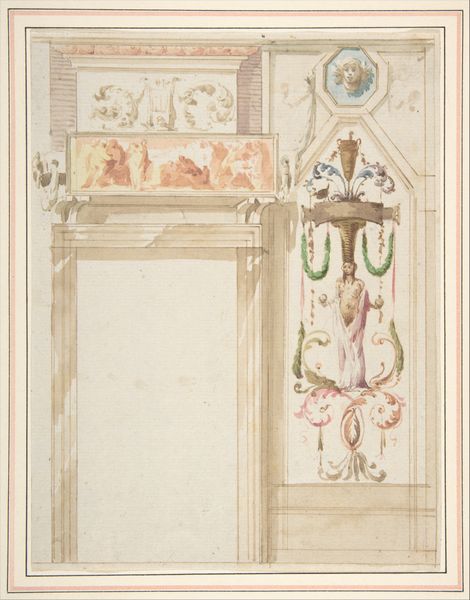
Two Designs for the decoration of walls pierced by pairs of double doors 1830 - 1897
0:00
0:00
drawing, print, watercolor, architecture
#
drawing
#
toned paper
# print
#
watercolor
#
history-painting
#
academic-art
#
watercolor
#
architecture
Dimensions: Overall: 11 7/8 x 9 in. (30.2 x 22.8 cm)
Copyright: Public Domain
Curator: Here we have "Two Designs for the decoration of walls pierced by pairs of double doors" by Jules-Edmond-Charles Lachaise, created sometime between 1830 and 1897. It is currently located in the Metropolitan Museum of Art. Editor: My initial impression is one of understated opulence, like a stage set for a drawing-room drama. Curator: Let’s delve deeper. As the title suggests, this work on toned paper presents two distinct interior design schemes. Both incorporate double doors, and utilize watercolor, print, and drawing techniques. It feels like a proposal for aristocratic patrons, steeped in the culture of production of the late 19th century. The use of different mediums and printing processes likely provided various cost options for these patrons. Editor: Absolutely. And note the strategic placement of symbols in each design. The upper scheme uses a symmetrical floral arrangement to denote peace and prosperity over the doorways. The cherubic figures of the lower section carry with them implications of innocence, familial love, maybe even references to classical themes like Eros, but set against more industrial concerns. These are more than mere decorations; these were symbolic gestures designed to shape how visitors perceive the residents, no? Curator: Precisely! It tells of the emerging role of art as integral in crafting identity and projecting wealth. Imagine commissioning such detailed watercolors before committing to construction. The access to cheaper manufactured paint pigments meant middle class status symbols of luxury were more obtainable than they used to be. This wasn’t merely art but a service. Editor: The cherubs especially make me think. I suspect the choice of cherubs here alludes to themes of domesticity and familial continuation—values the inhabitants wished to project. Even in the choice of how to portray these mythological themes says volumes about the psychological expectations of the families who might've lived here, as seen from the design production end. Curator: Indeed. We see the confluence of artistry and labor. These architectural prints offered an early experience for families aspiring to signal traditional values, even as those traditions were challenged by newly available production and commerce avenues. The artful, skillful blending of utility with aesthetics illustrates a society attempting to maintain standards during periods of flux. Editor: It has a particular allure once we understand the encoded symbols, cultural baggage, and craft informing it, does it not? Curator: It really makes you consider the unseen work shaping the art and spaces of our lives.
Comments
No comments
Be the first to comment and join the conversation on the ultimate creative platform.
